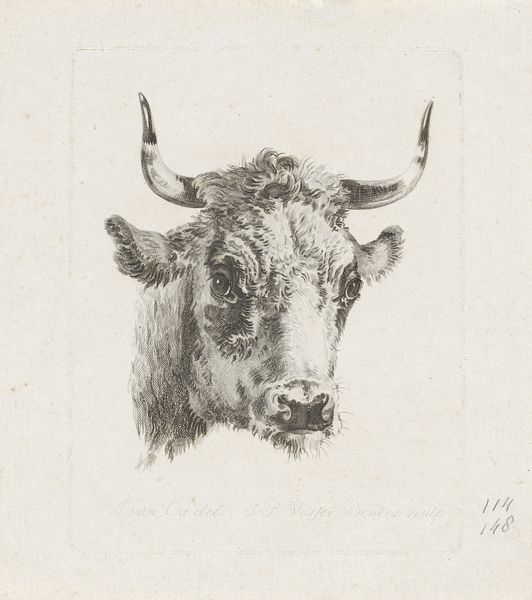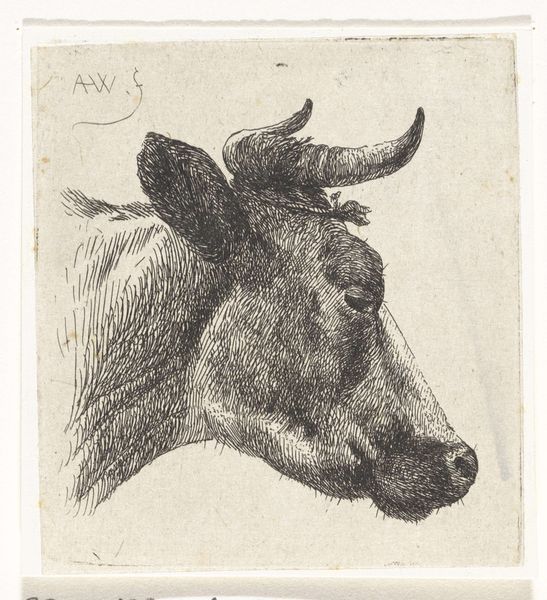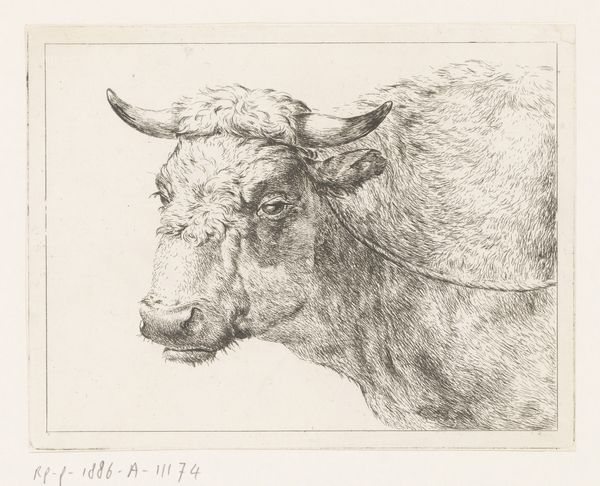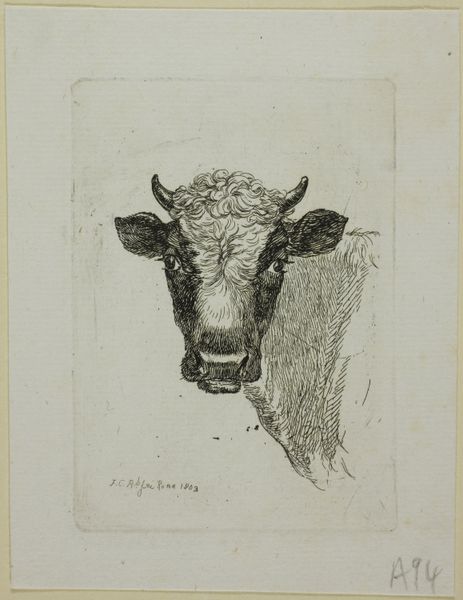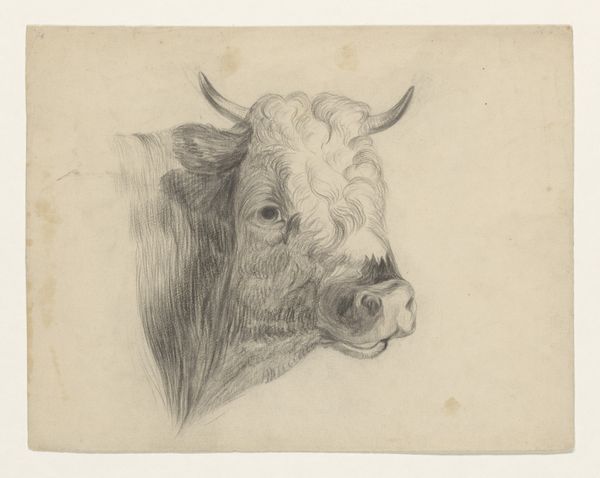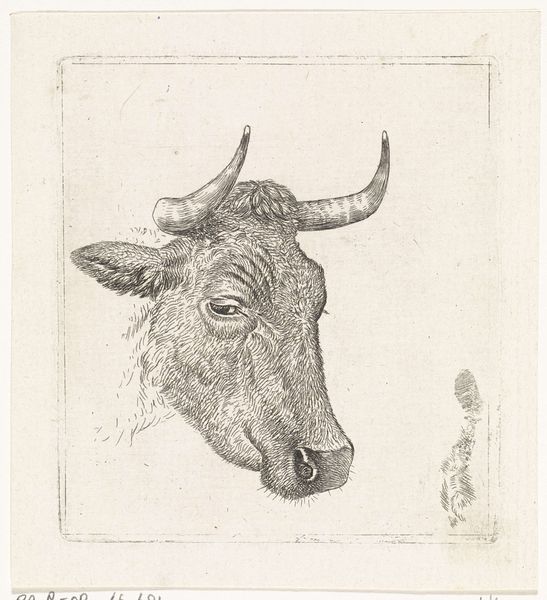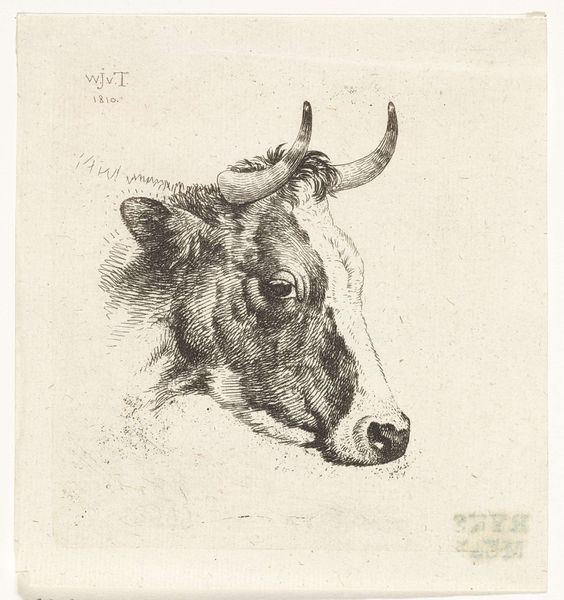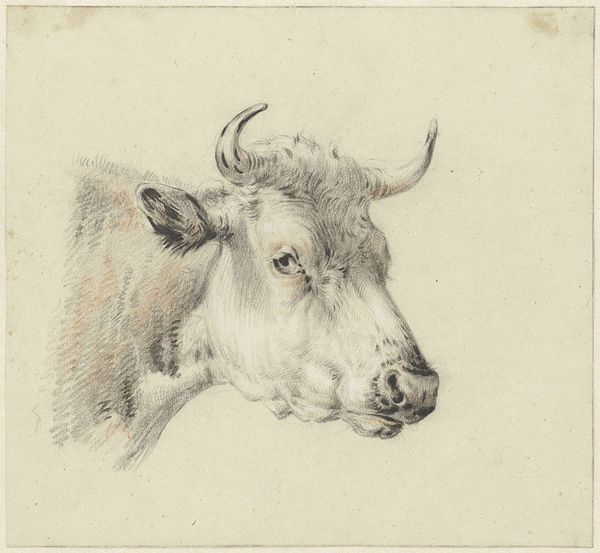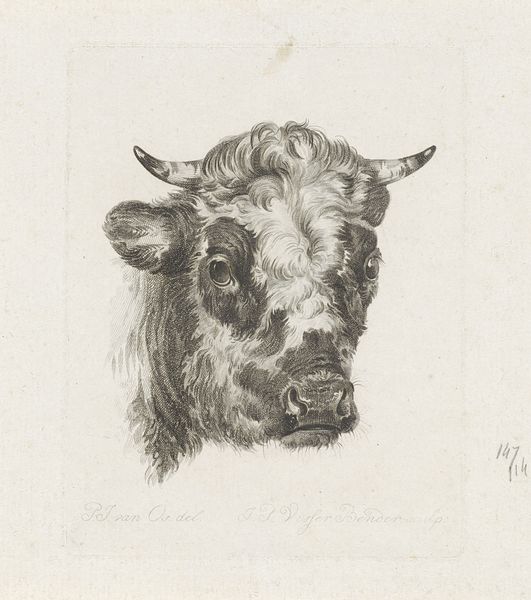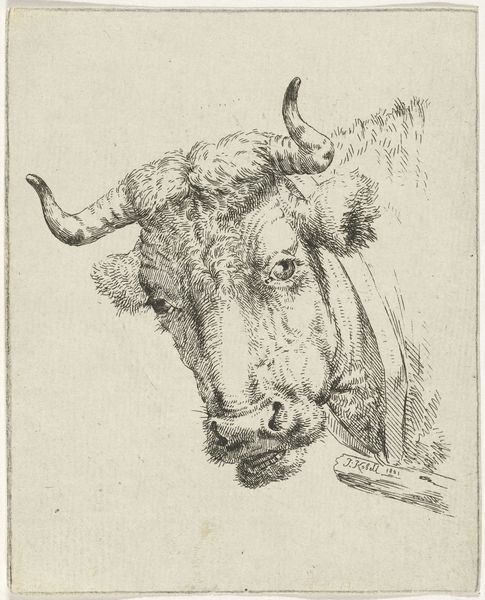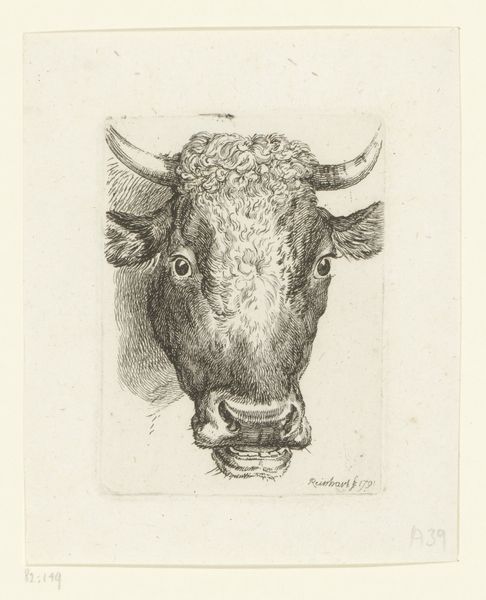
Buffalo Head Facing Left, from Die Zweite Thierfolge 1799 - 1803
0:00
0:00
drawing, print, etching, paper
#
portrait
#
drawing
# print
#
etching
#
paper
#
realism
Dimensions: 85 × 113 mm (plate); 111 × 144 mm (sheet)
Copyright: Public Domain
Curator: Here we have "Buffalo Head Facing Left, from Die Zweite Thierfolge" created by Johann Christian Reinhart between 1799 and 1803. It’s an etching on paper. Editor: My immediate thought is, what power rendered with such delicate strokes! It’s imposing, yet intimate in scale. The artist really captured the weight of that head with very simple, material choices. Curator: Absolutely, and consider the series it's part of, "Die Zweite Thierfolge," the Second Animal Series. These weren't mere animal studies; they reflected a burgeoning interest in natural history, certainly influenced by the Enlightenment's scientific fervor. Editor: That scientific eye is definitely present. Looking closely, the etching’s lines emphasize the animal's texture - the coarse hair, the heavy horn. The choice of etching itself contributes; it allowed for reproducibility and dissemination of knowledge. Think about how radical it was to present this level of detail outside established academic spheres. Curator: Precisely. But it also reflects colonial power. The artist rendering images of animals as specimens, participating in that system of categorizing the natural world from a European, male, privileged perspective. Who owned these animals, who benefitted from them? Editor: Yes, that is implicit here in the act of image creation through specific means. The consumption of images of animals, a type of luxury during that period. To consider how access and representation intertwine is critical, particularly in a medium dependent on specific technologies. Curator: It speaks volumes, doesn't it? These historical depictions of the natural world have had an impact on shaping identities of gender and race in relationship to that landscape. It underscores the historical construction of knowledge. Editor: So a deceptively simple animal study holds much complexity, highlighting how materials and process, especially when disseminated, shaped culture. Curator: It definitely offers fertile ground for discussing the intersections between art, power, and our understanding of the natural world. Editor: Agreed. Makes you reconsider what we assume to be merely a scientific sketch.
Comments
No comments
Be the first to comment and join the conversation on the ultimate creative platform.
